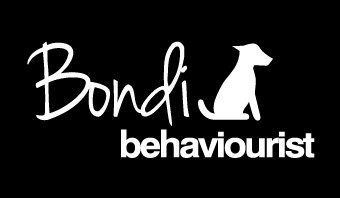Your dog doesn’t want to play or say hello when they approach other dogs
Understanding Your Dog’s Information-Seeking Behavior
Remember this! - When a dog encounters a new situation, when it’s meeting another dog, greeting a person, or facing something unfamiliar, their primary goal is not to play or say hello — it’s to get information. Understanding this natural behavior can help dog owners in Sydney better navigate social encounters and training situations.
The Need for Information
Dogs are naturally curious and cautious creatures. When they approach an unfamiliar situation, they’re seeking answers to a fundamental question… what does this mean for me?
Is this a threat?
Is this a friend?
How should I react?
Their decisions are based on the information they receive from the individual and their environment. How they interpret that information is affected by their current wellbeing, state of arousal and what their expectations were going into the situation.
The Importance of Your Dogs State of Arousal
The higher your dogs state of arousal, the lower their ability to process information.
If they can’t hear, read or respond appropriately to others because they’re over stimulated (whether that is because of excitement, fear, anxiety or whatever) then they are not in the right frame of mind for socialising.
Don’t just take the ‘easy route’ of letting your dogs run in and be overstimulated. This will ruin other dogs days and ultimately teach your dog habits that may actually force you to restrict their socialising more and more as time goes on.
Slow things down, take your time and practice gentle socialisation and your dog will have a happier time around others over the years.
The Importance of Reading Feedback
Dogs may have expectations about an encounter—perhaps they expect a playful interaction or a friendly greeting. However, they rely on immediate feedback to confirm or adjust their behaviour according to what they receive.
It’s a conversation between the dogs and ultimately our role in this is to ensure that our dogs are feeling safe and comfortable while not having a negative impact on anyone elses wellbeing. This is the bare minimum.
If another dog signals disinterest or discomfort, it’s up to the owner to guide their dog away respectfully. Teaching dogs to recognize and respond appropriately to social cues helps prevent negative interactions.
If the dogs are getting along or are making positive progress in their interactions, this is the time to consider staying longer of course.
Insecure Dogs and Guarded Behavior
When we see dogs approaching situations with tension or agitation, pressing too intensely or even aggressively for information, it often indicates insecurity. These dogs may:
Stand over other dogs.
Display tense body language.
Be perceived as dominant or pushy.
Often even overly playful dogs that aren’t reading the other dogs social cues are trying to relieve their own stress of being there.
These behaviours often stems from a lack of confidence and the need for positive experiences to build trust.
Creating Positive Experiences
Throwing an insecure or anxious dog into overwhelming social situations rarely leads to positive outcomes. Instead, dog owners should focus on gradual exposure and confidence-building.
Tips for Setting Your Dog Up for Success:
Controlled Social Introductions: Introduce your dog to new environments and dogs in a controlled manner with an emphasis on your dogs arousal and coherence. If they’re over stimulated and cannot respon to your cues or the cues of others then reset and take the time to bring their arousal down before continuing.
Positive Reinforcement: Reward calm and appropriate social behaviour. This doesn’t have to be treats or praise, sometimes simply allowing a positive social interaction to continue is plenty of reward.
Reading Body Language: Pay attention to signs of stress or discomfort and intervene when necessary - We don’t want to micromanage but if we see our dogs are not recovering emotionally from negative experiences this is when we step in but if your dog has a negtivate experience and bounces back quickly then keep watching to see how it progresses.
Respecting Boundaries: Ensure your dog respects the space of others and exits interactions gracefully when needed - Remember that socially appropriate is actually what being social is about. The dog that wants to say hello to everyone but isn’t picking up what the others are saying is actually being anti social.
Conclusion
Understanding that your dog’s primary goal is information gathering can change how you approach social situations. By setting them up for success, respecting their need for security, and fostering positive experiences, you can help your dog develop confidence and social skills.
If you’re looking for expert guidance on how to train your reactive dog or navigate social situations, consider professional dog training programs in Sydney that focus on compassionate and thoughtful training methods.

